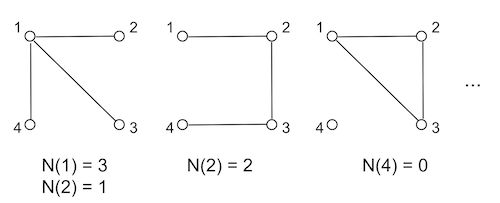Topics
- Bargaining on Networks
- Contagion Models
- Mean-Field Approximation
Recall
- Take-it-or-leave-it offer:
- One party makes an offer.
Then, the other party accepts or rejects it.
Game end. - The proposer takes all the surplus.
- One party makes an offer.
- Rubinstein’s bargaining:
- One party makes an offer.
The other party accepts or rejects.
If rejected, he makes a counter offer.
Continue until a party accepts. - The first proposer takes 1/(1 + δ). The offeree takes δ/(1 + δ).
- One party makes an offer.
Bargaining on Networks
What if there are two sellers?
- Take-it-or-leave-it offer:
- If S1 offers p, S2 has incentive to offer p — ε.
- Even if sellers make (simultaneous) offers, they receive 0. The buyer receives 1.
- Rubinstein’s bargaining:
- If S1 offers 1/(1 + δ), S2 has incentive to offer 1/(1 + δ) — ε.
- Again, the sellers receive 0, the buyer takes it all.
Contagion Models
Recall games with externalities
- N = [0, 1]
- Si = {Adopt, Not Adopt}

- Where X is the share of adoption.
This has externalities, but network structure doesn’t matter. In reality, you may register for Instagram not only because it is popular, but also because your friends have it.
Consider undirected graph (V, E), N(i) ⊂ V
Where V are vertices, E are edges, and N is the set of neighbors of vertex i ∈ V.
- N = V
- Si = {Adopt, Not Adopt} = {1, 0}.

Example

- Too complicated to solve (many-body problem).
- Nor do we care about particular solution on particular networks. Often concerned with particular degree distribution, but not finer details.
- Mean-field approximation to solve for stationary equation.
To solve:
- Consider random graph with the degree distribution and fix some neighbor adoption probability X.
- Obtain best response strategy given X and compute adoption share X̂.
- Derive fixed point.
Example
Let N = V = [0, 1] and

- Agents are heterogeneous ci ~ F(0, 1).
- Degree distribution di ~ D.
To solve:
- Fix some X. Pick agent i randomly.
- i with ci and di would adopt if

- Since ci ~ F[0, 1], the probability that a random person with degree di (but unknown ci) adopts is F(V(di, X)). Since di ~ D, we have the share of adoption 𝔼D[F(V(di, X))] . From here, we can compute the neighbor adoption share X̂.










